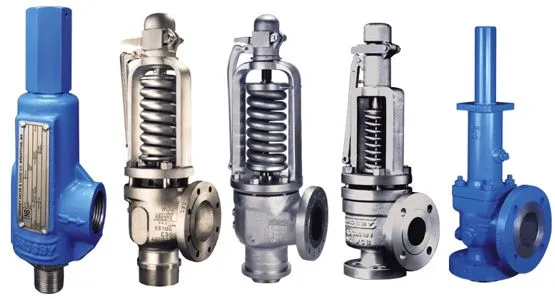High temperature, high pressure, flammable, explosive and other continuous production operation fields have very high requirements of safety valves' service lives, safe operation and stability.
The
safety valve is a kind of the intrinsically safe protective measure and is operated by spring force and media's force; no any other human force or external force is involved in operation of safety valves, which prevents accidents caused by human errors. The functions of the safety valves are fulfilled by the following operation. When the system reaches the maximum allowable pressure, the
safety valve can be opened accurately and can discharge the medium steadily with the rise of the system pressure; the safety valve can discharge the rated working medium under the rated discharge pressure; when the system pressure drops to a certain value, the safety valve should be closed; the necessary sealing of the safety valve should be maintained when the
safety valve is closed.
Safety valves can be classified into spring-loaded safety valves, balanced bellows safety valves and pilot-operated safety valves according to their different overall structures and loading mechanisms.
1.
Spring-loaded safety valves
The
spring-loaded safety valve overcomes the acting force generated by the pressure from the medium below the valve clack with the help of the spring's closed force. If the media are not harmful to people and the environment, harmless media such as non-toxic, non-flammable, non-explosive and inexpensive media, we can use the ordinary safety valves to directly discharge them into the atmospheres.
2.
Balanced bellows safety valves
The effective area of the bellows is equal to the area of the sealing surface of the valve seat and is used to counteract the effect of the backpressure acting on the setting pressure.
Balanced bellows safety valves are applied to working conditions such as high temperatures, high pressure, high backpressure and medias which can not be directly discharged into the atmospheres.
3.
Pilot-operated safety valves
A
pilot-operated safety valve consists of a main valve with a flexible unbalanced valve clack and an external pilot valve (a piston); the pilot-operated safety valve relies on the medium which is discharged from the pilot valve to drive or control opening and closing of the main valve. Compared with balanced bellows safety valves, backpressure compensation coefficients of
pilot-operated safety valves are higher; the impact of the backpressure on the action characteristic is reduced to the minimum, resulting in the large discharge. Taking reaction kettles as an example, media of reaction kettles are discharged greatly in excess pressure processes; if you use balanced bellows safety valves, you will need 16 sets of them; if you choose pilot-operated safety valves, you will only need 8 sets of them or even fewer. The pilot-operated safety valve will bring many advantages to users, advantages such as less installation, less maintenance, less engineering and easy maintenance. Of course, the pilot-operated safety valve technology is more complex, which puts the higher requirements on the technical level of the operator.
